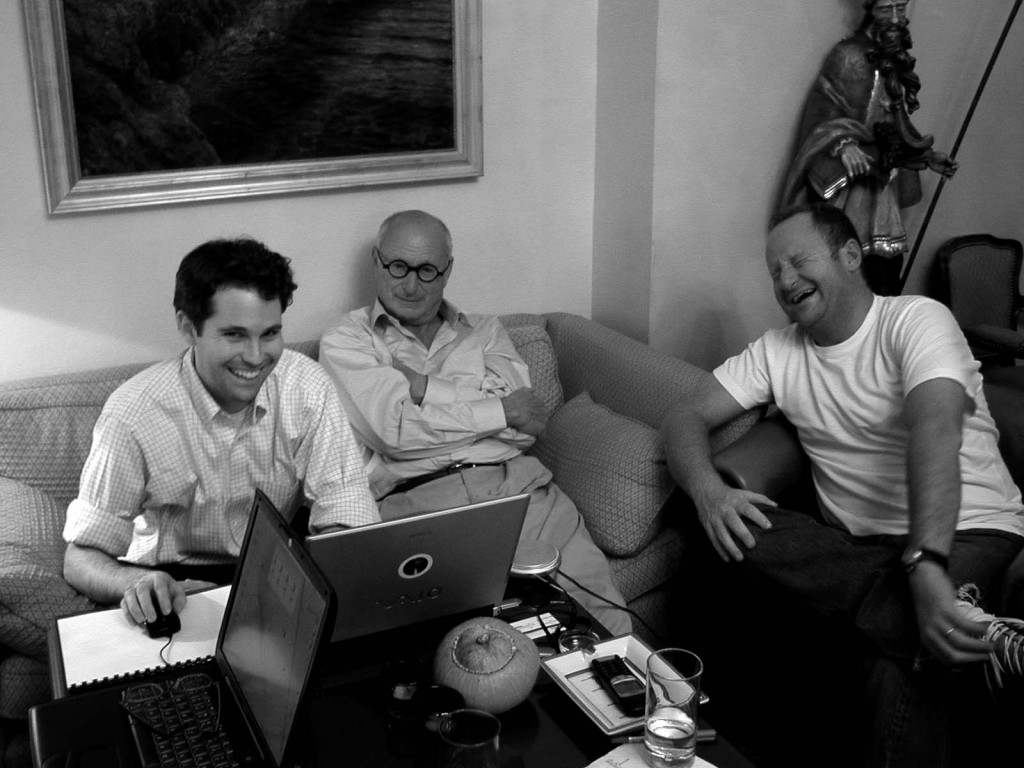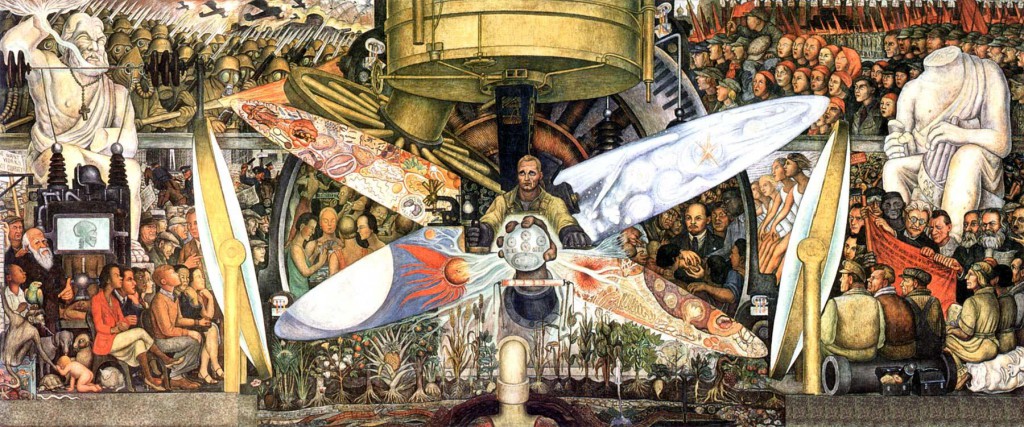Ten years ago today I became a branding consulting.
Fittingly enough, given how much gallivanting this career has involved, on my first day on the job I went directly to Heathrow airport.
Branding pioneer and guru Wally Olins, my mentor at Oxford and the man who’d hired me as the first full time consultant in Saffron’s London office, was there ahead of me. I can picture the scene in the departure lounge as vividly as if it were yesterday. “Your shoes aren’t shined,” he glowered teasingly, apropos of nothing. I looked at my feet; they looked all right to me. “Might be,” I shrugged as coolly as I could, “but this suit I’m wearing is impeccably pressed.”
That sort of banter carried on for the next five years as Wally and I worked side by side and hand in glove – and very rarely at cross purposes – for clients ranging from Lloyd’s of London to Rolls Royce.
Looking back on my decade in the branding business (which began after the conclusion of my first career, which had been, roughly speaking, on Wall Street), the thought that overwhelms my brain is how much I’ve learned from others.

Keeper of the sacred PowerPoint: me with Wally and Jacob, in a hotel lobby in Munich, putting the finishing touches on a presentation for the European Patent Office.
Recently on Facebook, I shared an article by Seth Godin that I concurred with (“Steal, Don’t Invent“), adding: “Stand on the shoulders of giants — proudly, in honour of your own good taste in giants. And reinvent the wheel only as a last resort.”
It’s a pithy summation of my working philosophy. Alas, a proper inventory of whom I’ve learned from and what I learned from them (to say nothing of an itemisation of the dozens of wheels I’ve refrained from reinventing) would be a book-length project.
Instead, to mark my tenth anniversary as a branding consultant, I’ve picked ten brilliant things I’ve heard people say which have stuck with me, and I’ll remark briefly on each one.
“A brand is a promise of an experience”
Jacob Benbunan, CEO of Saffron Brand Consultants
This is still the most accurate and useful non-jargony definition of a brand I know. Jacob said it to me very early on in my tenure at Saffron, and I’ve used it myself countless times since.
One time I had a chance to repay Jacob for this quote. For a project in 2005, he and I had to go to East Timor. I got there the day before he did, and right away sent him a text about what he could anticipate: “Whatever your expectations are, lower them.” He repeated that line for years, as though it were a corollary to his own aphorism, which I suppose it is (if you’re a cynic).
“Branding is the deliberate capture and accumulation of reputational value.”
Simon Anholt
The terms “marketing,” “promotion” and “branding” are often used synonymously. They’re different animals, though, and you conflate them at your peril. As Simon also taught me, the brand is most correctly thought of as the context in which marketing and promotion happen. (“The brand is the context in which marketing messages are perceived” is almost exactly what he said.)
The most important takeaway from this insight is the humbling awareness that, by and large, you cannot communicate or market your way to a better brand. It also emphasises how sticky, howe resistant to adjustment, an existing brand image can be.
“What do you want people to feel?”
Eric Scott
Eric may be one of the great creative directors of all time; he’s certainly the greatest I’ve worked with. After being a creative director at Apple for awhile, and then at Wolff Olins (where he did an identity revamp for FedEx with CEO Fred Smith and created the Product Red brand with Bono), he spent at immensely productive year at Saffron. He and I worked most closely on the project I led for Visit London, the marketing department of Europe’s largest city. We both left Saffron in 2009, and still talk regularly.
“What do you want people to feel?” was/is one of his touchstones when doing branding work. With emotional logic like that, he successfully sells in remarkable — and remarkably effective and endring — work to clients.
The line reminds me of some management advice Minnesota envelope tycoon Harvey MacKay shared when he spoke to my class at Wharton in 1994: “People won’t always remember what you told them,” said Harvey. “But they’ll never forget how you made them feel.”
“The best advertising isn’t advertising.”
Ajaz Ahmed, chairman, AKQA
I met Ajaz when he spoke to my Oxford MBA class in 2002, and first collaborated with him in 2003 after he read some of my Wall Street Journal articles and engaged me as a copywriter. The amount I’ve learned from him in the intervening years is incalculable, but that gem above remains one of the standouts. I think it’s self-explanatory and elegantly worded, so I won’t belabour and re-hash it. You get the idea.
“If I can’t read the room, we’re in trouble anyway.”
Tyler Brule
Very recently I’ve worked on a couple of projects in which Tyler Brule’s multi-talented agency Winkreative has also been involved. Tyler’s an FT columnist and also runs the Monocle branded empire: Monocle magazine, Monocle 24 radio, the Monocle cafe, and the Monocle shops. Before all this, he founded, built, and then sold Wallpaper* magazine.
One of the first times I met Tyler he was on stage at the Frontline journalists club near Paddington Station in West London. Asked by someone in the audience how much market research he undertook before and after the launch of Monocle, he surprised most of the audience — but not me — by answering “none.” He explained that the abiding vision for Monocle was his, and he’d been developing since childhood (reading magazines from around the world while growing up in Canada) and that along with a few trusted compatriots, he makes all the judgment calls related to running the magazine. The questioner followed up with “But isn’t that dangerous?” to which Tyler, smiling, responded: “If I can’t read the room, we’re in trouble anyway.”
Takeaway:
There’s a lot of intuition in branding, and brand managers need to learn to trust their gut. Running a brand well is about knack and knowing, not about calculating. It comes from the heart far more than from the head.
“Writing is easy…until you think about the reader.”
Ernest Hemingway
This is about communications more than it is about identity. But it’s so fundamental, and comes up so often, it’s worth a mention.
Hemingway could have written, “Branding and marketing are easy until you think about the audience or customer.”
Put differently: what you want to say matters. But it doesn’t matter independently of what people are prepared to hear or what they care about or value. I advise clients think about what people are interested in…then from among that set of messages, choose the ones that are the priority from your own perspective.
“Evolve immediately”
Stefan Olander, vice president, digital marketing, Nike
Branding isn’t an art project, it’s a management tool. And a successful branding programme is a change programme: you want to come out of it better than you went into it. You want to be positively and permanently altered.
And the highest level of brand consciousness in organisations allows them to do what Stefan suggests: evolve immediately. They know their own identities so well, that the moment an opportunity for positive incremental change reveals itself, they pounce on it.
Or, to paraphrase Billy Crystal in <em>When Harry Met Sally</em>, “once you know what you want to do with the rest of your life, you’re going to want the rest of your life to start right away.”
Stefan shared this thought — evolve immediately — with me during one of the many editorial sessions we had together while he prepared his book <em>Velocity. </em>I’ve never forgotten it, and once or twice, at 3 o’clock in the morning, I’ve acted on it.
“If we approach clients with our own agenda we may be able to change more than just a typeface of annual report.”
Tibor Kalman, founder, M&Co., creative director for Benetton, etc.
In many of my engagements I’m purely an advisor or consultant, helping a resolve a conundrum, find a solution, or grow in sex appeal. I give the best advice I can, contribute the most useful ideas I can squeeze out of my brain, and then let the client get on with it.
But there are other projects — more and more frequent — when I perceive myself as an artist and my client as my patrons, we we are working together seeking an outcome we both love. In this mode, I feel like a muralist-for-hire: I need walls to paint on, so I look for kindred spirits and like-minded individuals who want want I want — who share my idea of branding or my passion for a particular execution or expression.
By default, clients tend to think I’m in it just for the money. And it’s true I’m a professional seeking payment commensurate with the long-term commercial value I’m helping create. But I also have a certain amount of what might be called “artistic integrity.” In a real way, branding is my art form, and see branding projects as a form of self-expression. Kalman, a legendary creative director, also said: “Good designers (and writers and artists) make trouble.” I’d add good brand consultants to that list, although I try very hard not to make trouble for my clients; I prefer to make it with them, collaboratively, in the course of creating work that is more effective for them.
“Earn the right to help.”
David Maister, consulting guru and author
I’ve tried to live by this golden rule for consultants for the last ten years. Because the fact that the client has hired me is just the beginning of the relationship. I still have to prove my worth. I have to earn my keep. I have to, in these eloquent and humble words, earn the right to help.
After I’ve secured a client, I pay very close attention to how things are going. As a rule of thumb, which varies considerably depending on the nature of the engagement, if clients aren’t taking an awful lot of my advice, I’ll often suggest parting ways. Maybe the fault is mine, and I haven’t earned the right to help, or my advice is bad. Or maybe the client is listening enough. Regardless of the cause, if it’s not a productive relationship, the best thing is often to end it amicably.
“You need the courage of my convictions.”
Wally Olins
It’s nice that I’ve become a recognised authority in branding, and the more grey hair I acquire the more persuasive I seem to become with clients.
Nevertheless, looking back on the last decade, a lot of my best work, a lot of the work I’m proudest off, and a lot of the work that clients have ended up profiting most handsomely from has been work that I had to twist somebody’s arm to get accomplished.
Famously, Wally was said by one of his clients to have “the right mixture of charm and brutality” — an assessment of which he was duly proud and with which I wholeheartedly agree. Sometimes he was more brutal than charming, sometimes vice versa. But there was, on the whole, a balance there.
But my favourite Wally story involves the time he was working for a major company — it might have been Accor Hotel Group, or British Telecom, I can’t recall. Anyway, Wally and his team had done months of work and just as they were on the verge of launching the new brand identity, the CEO started to get cold feet, started second-guessing the work. Wally pulled up sharp on the guy and told him, “Look, you’ve championed this work all along, and you’ve put a lot of faith in us. Now it’s the moment of truth. And if you don’t have the courage of your convictions, you need the courage of mine. And I assure you, this is the right way forward for your company.”
The CEO relented. The work launched. The rest is history.
Nelson Rockefeller hired Mexican painter Diego Garcia to make this mural on a wall at Rockefeller Center in 1934. Unfortunately, Diego insisted on including a likeness of Lenin amongst the characters featured in the painting. Rockefeller refused, paid Garcia the full $21,000 commission for the work…and then had the mural destroyed before it was ever unveiled.
Although I am approximately 17 times more conciliatory with clients than Garcia was (at least if we go by his portrayal in this movie scene, when he argues with Rockefeller, in which he adopts a tone I would never take with any patron of mine), this anecdote has always moved me – both Garcia’s artistic integrity, and Rockefeller’s business integrity. And while I never feel that clients are my “art project” to do with whatever I please, nevertheless I do find that consultant-client relationships consistently work very well when they more closely mimic artist-patron or craftstman-client relationships and look less like lawyer-client or account-client relationships.
Now…onward to the next ten years.




